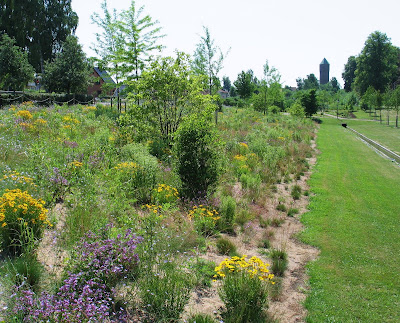Jan Spruyt runs a very special perennial nursery of great interest in Mostenveld. The assortment is vast and really exciting. I’m also excited myself to finally see the nursery in real life I have heard so much about and even bought plants from to several of my former projects.
Prairie inspired planting by Jan Spruyt
Geert Derom I don’t know that well yet but also him I’ve met through ISU. He is the head gardener, or Hoofdtuinman as it is called in Dutch or rather Vlaams, of a very interesting park in Hoegaarden in Belgium there I am supposed to create a model garden in the future. In the park, DeTuinen van Hoegaarden, there are already many different model gardens and borders as the shade garden, the exotic garden, the pond garden, the bulb garden and many others. Jan Spruyt has also made a prairie inspired garden there. I’ll come back with a report and hopefully nice pictures from the trip.
In the meantime you can read about the nursery and park here below and I also added a link to ISU, the International Perennial Union.
Jan Spruyt Nursery http://www.vasteplant.be/
Internationale Stauden-Union http://www.isu-perennials.org/site/index.cfm
De Tuinen van Hoegaarden http://www.detuinenvanhoegaarden.be/
Grasses in the winter from one of Jan Spruyt's plantings









































